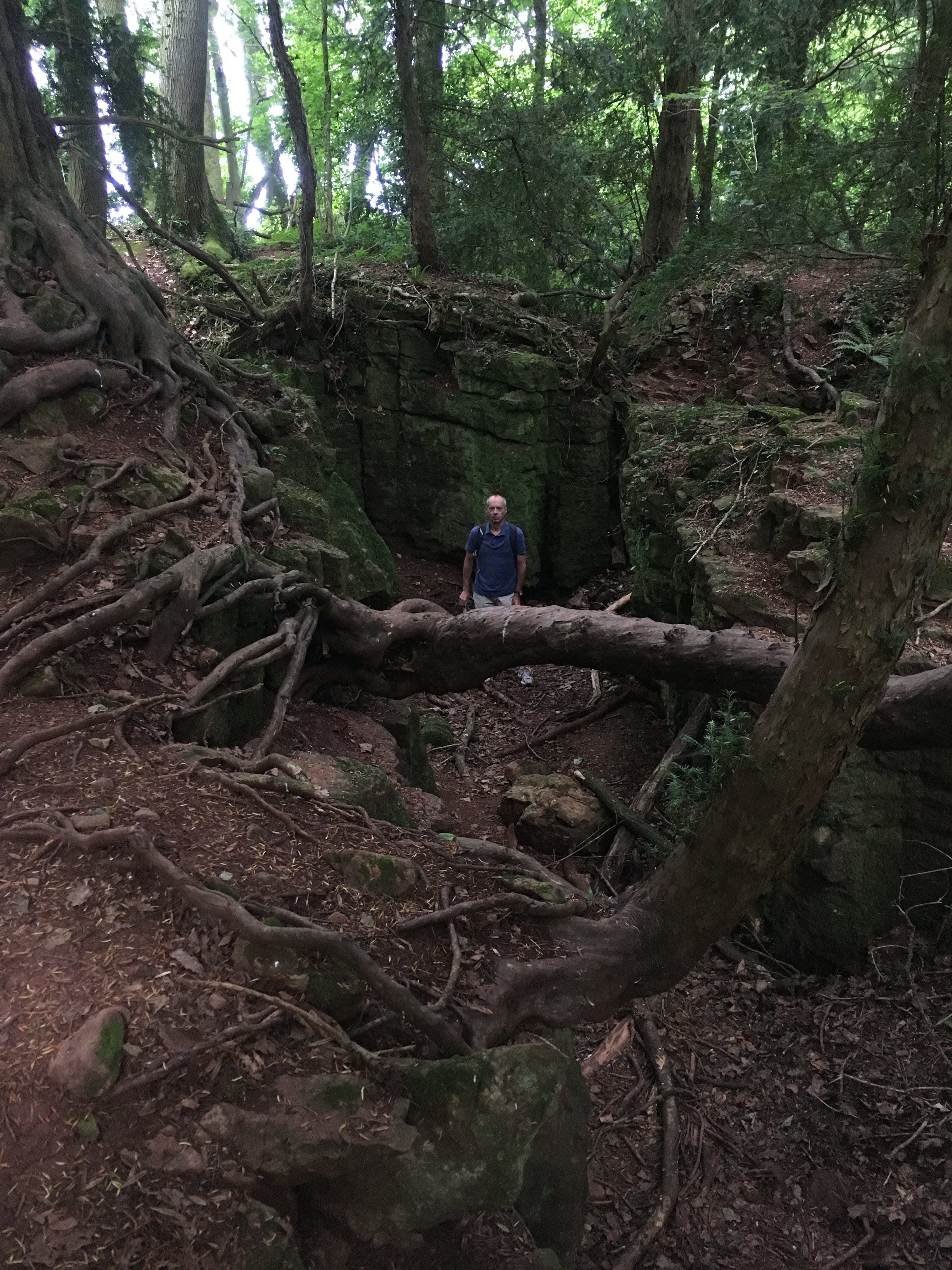
July 10, 2019
There is an isolated label in the west of England section of our campaign map still awaiting its green dot. So it is Debbie’s insatiable work ethic and my compulsive tidiness which propel us westwards to Gloucestershire for a few days of this pleasant July week.
Dean is not a town or village, but an area, best known for its forest. It has become much better known in recent years thanks to J K Rowling choosing it as the setting for some scenes from Harry Potter and the Deathly Hallows. She chose it because she knew it well: she lived in Church Cottage in Tutshill near Chepstow from the age of nine. So where better to start than there?

It’s a charming cottage: it came up for sale in 2011, but since it changed hands it has remained empty. There is no sign identifying it as Church Cottage – presumably to deter gawping tourists like me, and souvenir hunters. Nor is there any evidence of occupation, although the garden is being maintained. My guess is that J K Rowling herself bought it, and is keeping it mothballed, perhaps with the intention of one day offering it to the National Trust. Beatrix Potter’s house in the Lake District attracts thousands of annual visitors – this could one day be an even more popular attraction.
Puzzlewood is fourteen highly atmospheric acres of ancient woodland in limestone scenery, much beloved by the BBC who have used it to film Dr Who, Merlin and other dramas.



Time to explore less idiosyncratic but no less beautiful parts of the Forest of Dean.


The Forest of Dean was the site of a notable piece of pre-Brexit xenophobia on 26 April 1889, when four Frenchmen and their two bears were making their way to Ruardean, having performed in Cinderford. They were attacked by an angry mob, enraged by fake news that the bears had killed a child and injured a woman. The bears were killed and the Frenchmen badly beaten.
It soon became clear that the bears had not attacked anyone. Police proceedings followed and a week later 10 colliers and labourers were found guilty at Littledean of killing the bears and assaulting the Frenchmen. A total of £85 was paid in fines. A subscription was launched by more internationally minded locals, which generously compensated the Frenchmen and doubtless laid the ground for the Entente Cordiale in 1904.
This incident led to the term “Who killed the bears?” being hurled as an insult between the people of Cinderford and Ruardean. I detect echoes there of the famous Hartlepool “monkey hangers”.

We stayed in this cottage in Bream – the left hand part


Leave a comment